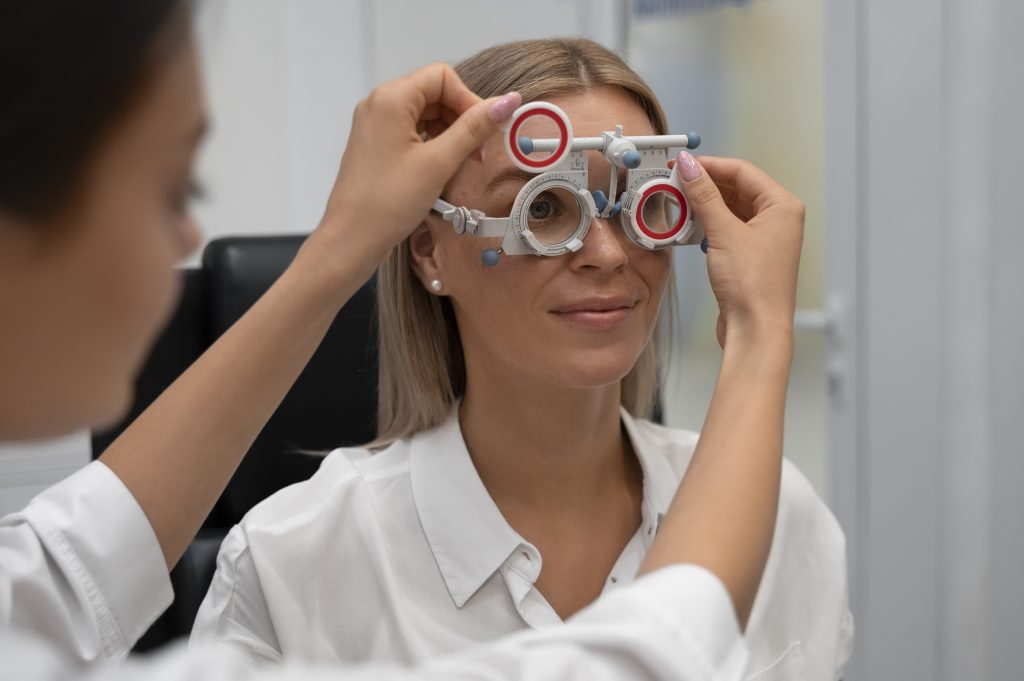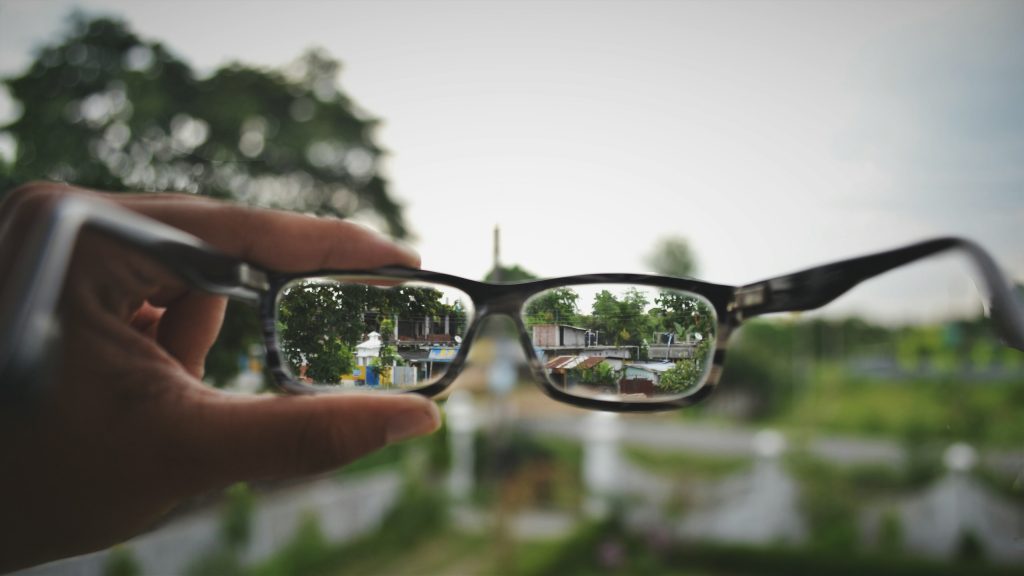© Dr Anurag S. Agarwal Eye Clinic. Privacy Policy
Powered by PRAZONE Web Solutions
As an experienced ophthalmologist practicing for over 22 years in Mumbai, we frequently encounter patients with refractive errors treatment like myopia, hyperopia, and astigmatism. These conditions affect how light enters and focuses on the retina, leading to blurred vision.
Fortunately, corrective lenses provide a simple and effective solution to restore clear eyesight and Advanced surgical technique such as LASIK (Only if person fit for LASIK Surgery). In this blog post, we will explain these common vision problems, their causes, symptoms, types, diagnostic procedures, and treatment methods to help you better understand and manage your eye health.

Myopia (near-sightedness) is a refractive error that causes distant objects to appear blurred, while near objects remain clear. On the other hand, hyperopia (far-sightedness) makes it difficult to focus on close-up objects, but distant vision remains sharp. Astigmatism is a condition where the cornea (the clear front part of the eye) or the lens inside the eye has an irregular curvature, resulting in distorted or blurred vision at all distances.
Condition | Symptoms |
Myopia (Distant object to appear blurred) | Squinting, eye strain, headaches when viewing distant objects |
Hyperopia (Close object appears blurred) | Eye strain, headaches, squinting when reading or doing close work |
Astigmatism (Blurred vision at all distance.) | Blurred vision, eye strain, headaches, distorted images |
Myopia is often hereditary, but can also develop due to environmental factors like prolonged near work or lack of outdoor time during childhood. Hyperopia is primarily caused by an eyeball that is too short or a cornea that is too flat, which prevents light from focusing correctly on the retina. Astigmatism occurs when the cornea or lens has an irregular curvature, causing light to focus at multiple points on the retina.
Individuals with myopia may experience difficulty seeing distant objects clearly, such as road signs or blackboards. They may also squint or experience eye strain and headaches when trying to focus on distant objects. Those with hyperopia often complain of eye strain, headaches, or fatigue when reading or doing close work. Astigmatism can cause distorted or blurred vision at all distances, along with eye strain and headaches.

To diagnose refractive errors, we conduct a comprehensive eye examination, which includes:
Corneal topography (to map the corneal surface), may be performed to assess astigmatism or other irregularities.
The primary treatment for myopia, hyperopia, and astigmatism involves
During LASIK surgery, the eye doctor uses a special laser to reshape the cornea. The cornea is the clear front part of the eye. By changing its shape, the laser helps focus light rays precisely on the retina at the back of the eye. This allows for clear vision without needing glasses or contact lenses.
The LASIK procedure is usually quick, taking around 10-20 minutes per eye. It is done under local anaesthesia drops so there is no pain during surgery. First, the doctor creates a thin hinged flap on the outer cornea using another laser or instrument. Then the excimer laser precisely removes microscopic amounts of corneal tissue under the flap to reshape the curvature. Finally, the flap is repositioned to heal naturally.
Most people notice improved vision right after LASIK, with vision continuing to stabilize over a few days. There is little downtime, with many resuming normal activities within 24-48 hours. LASIK has a high success rate and patient satisfaction. However, like any surgery, there are some risks and side effects that the doctor will explain beforehand.
LASIK cannot correct age-related vision changes like presbyopia that occur in the 40s and beyond. But for those with stable refractive errors, LASIK can reduce or eliminate their dependency on glasses or contacts with a quick, bladeless procedure.

While refractive errors cannot be completely cured, they can be effectively corrected with the appropriate treatment methods, such as corrective lenses or refractive surgery.
LASIK is generally considered a safe and effective procedure when performed by an experienced and qualified surgeon. However, as with any surgical procedure, there are potential risks and complications that should be discussed with your ophthalmologist.
If left uncorrected, refractive errors can contribute to eye strain, headaches, and fatigue, which can impact daily activities and quality of life. In some cases, untreated myopia may increase the risk of developing other eye conditions, such as retinal detachment or glaucoma.
If you or a loved one are experiencing Refractive Error eye disorders, it is crucial to seek professional medical attention. Early diagnosis and proper management can help preserve vision and improve quality of life. Dr. Anurag Agarwal, a senior ophthalmologist in Mumbai with over 22 years of experience, specializes in the diagnosis and treatment of genetic eye disorders. Schedule an appointment today on call!
Contact Senior Eye Surgeon in Mumbai – Dr Anurag S. Agarwal. Dr Anurag Agarwal is available at 4 Hospitals in Mumbai Suburban.
Book an Appointment with Dr Anurag S. Agarwal Eye Clinic in Goregaon, Mumbai Suburban today to schedule an evaluation.